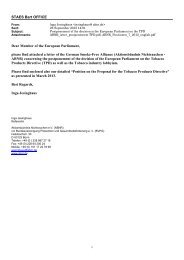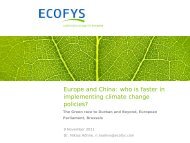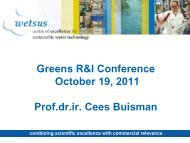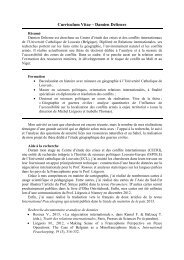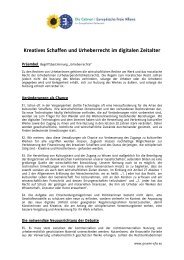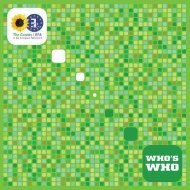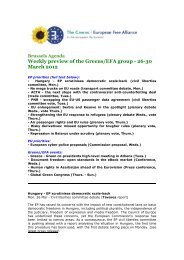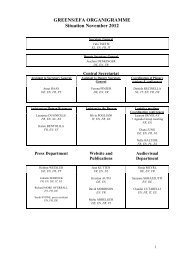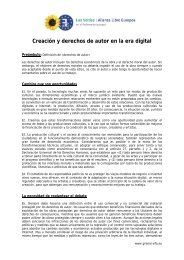Agro-Biotechnology: - The Greens | European Free Alliance
Agro-Biotechnology: - The Greens | European Free Alliance
Agro-Biotechnology: - The Greens | European Free Alliance
You also want an ePaper? Increase the reach of your titles
YUMPU automatically turns print PDFs into web optimized ePapers that Google loves.
Technical problems | Cloned farm animals - a ‚killing application‘? | 19<br />
in chromatin structure and/or gene expression. Miyashita et al. noted differences<br />
in telomere lengths among cloned cattle derived from different cell<br />
types. Moreover, X-chromosome inactivation may (mice) or may not (cattle) be<br />
normal. Wrenzycki et al. noted aberrant expression of genes thought to be of<br />
importance in stress adaptation, trophoblastic function, and DNA methylation<br />
during preimplantation development in cloned bovine embryos. Yet, many<br />
mice and other animals have survived to adulthood despite widespread gene<br />
dysregulation, indicating that mammalian development may be rather tolerant<br />
to epigenetic aberrations of the genome. <strong>The</strong> ultimate consequences of epigenetic<br />
aberrations of the genome in cloned animals remain unclear but may<br />
result in an early death.”<br />
Epigenetic dysregulation is not the only possible reason for adverse effects in<br />
next generations. Other possible reasons are disturbances on the level of DNA<br />
possibly derived from the donor animals or caused by the SCNT process. FDA<br />
(2008) mentions three examples:<br />
“Three traits that may be genetically caused were identified (cryptorchidism 20<br />
in three calves derived from the same cell line, parakeratosis 21 in one swine<br />
clone, and sensitivity to endophyte 22 toxicity in two cattle clones). <strong>The</strong>se may<br />
pose health risks to the animals, and are certainly economically undesirable.”<br />
So far it has been impossible to exclude risks for further generations. Where<br />
unexpected effects occur in the following generations, they might cause<br />
substantial damage because of the widespread use of single bulls for artificial<br />
insemination. <strong>The</strong> Center for Food Safety criticises EFSA for disregarding studies<br />
that show epigenetic effects in F1 generation of cloned animals and warns<br />
of possible effects for further generations caused by mutations and epigenetic<br />
effects (cited from EFSA 2008b):<br />
“Any chromosomal instability and lack of maintenance of genetic integrity<br />
(somatic mutations) in clones could have widespread consequences. Indeed,<br />
a large proportion of these putative mutations would have a recessive effect,<br />
meaning that they would be expressed, and therefore detected, only several<br />
generations after their spread in the populations. <strong>The</strong> same is true for the<br />
epigenetic status of live cloned animals.”<br />
It has to be acknowledged that epigenetic disturbances once established and<br />
spread through large animal populations have a huge potential for causing<br />
extreme damage in animal food production and agriculture.<br />
20 <strong>The</strong> testis do not descend but remain inside the body<br />
21 Problem of the skin<br />
22 funghal organism



